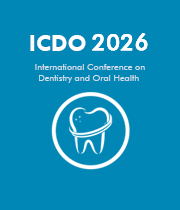Title: Orthodontic extrusion and vertical alveolar ridge augmentation: A case report step by step
Abstract:
The alveolar ridge undergoes a significant remodeling process following tooth removal. These hard and soft tissue change may affect the outcome of treatment with implants, either by limiting the bone volume needed for anchorage of the implant or by compromising the esthetic result regarding the appearance of the soft tissue at the final implant-supported reconstruction. The decision regarding the optimal bone augmentation protocol for the regeneration these defects is primarily based on the defect morphology. Based on this, a classification of bone defects has been developed, aiming to simplify the decision- making process regarding choice of the strategy for bone augmentation. The Class 5 defects are characterized by reduced ridge height . Vertical ridge augmentation is indicated in situations in which the remaining amount of vertical bone is insufficient for anchorage of the implant or in which an unfavorable appearance of the soft tissue is expected owing to the lack of hard-tissue support. These defects are most challenging to treat because the rate of soft-tissue complications appears to be considerably higher for vertical ridge augmentations than for horizontal augmentations. This may be because a tension-free primary wound closure is more difficult to achieve as a result of the increased volume to be covered . The case report is an alternative technique for treat these defects. The defect was very significant in the anterior region of the maxila and the prognosis of the surgery was uncertain, for this reason the orthodontic extrusion was the treatment of choice to achieve vertical height of the alveolar ridge. A vertical ridge regeneration was obtained and esthetic result was successful.




